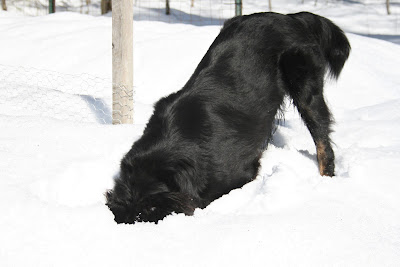"We reached the old wolf in time to watch a fierce green fire dying in her eyes. I realized then, and have known every since, that there was something new to me in those eyes-- something known only to her and to the mountain. I was young then, and full of trigger-itch; I thought that because fewer wolves meant more deer, that no wolves would mean hunter's paradise. But after seeing the green fire die, I sensed that neither the wolf nor the mountain agreed with such a view."
--
Thinking Like a Mountain in A Sand County Almanac by Aldo Leopold, 1949
(Photo: Aldo Leopold at his shack in Sand County, Wisconsin, The Aldo Leopold Foundation)
Aldo Leopold lived from 1887 to 1948; he died of a heart attack while helping a neighbor fight a brush fire. Leopold was a forester, ecologist, wilderness advocate, hunter, author, father, landowner, and conservationist. The breadth of his live experiences, his curiosity about the natural world, and his influence on our thinking about forestry, wildlife management, watershed restoration, and wilderness is extraordinary.
His most influential writing is
A Sand County Almanac. It is there that he wrote about the natural phenomena around his cabin in Sand County, Wisconsin - about
January Thaw,
Good Oak,
Sky Dance, and more. The
Almanac also includes "Sketches Here and There" including
Thinking Like A Mountain. Something changed in Leopold -- something deeply philosophical -- on that day, when he and friends killed that old wolf. One of hundreds, perhaps thousands, of wolves that he helped exterminate. He believed then that wolves were bad. The green fire in those dying eyes changed everything. As a scientist and a wilderness advocate, he began to realize that wolves were part of the community, actually essential to healthy ecosystems. Fewer wolves meant too many deer, not the reverse.
Perhaps the most profound part of
A Sand County Almanac, is Leopold's vision of A Land Ethic. He wrote, "In short, a land ethic changes the role of
Homo sapiens from conqueror of the land-community to plain member and citizen of it. It implies respect for his fellow-members, and also respect for the community as such." Leopold cared about human relationships and human relationships to the land.
The first ever full-length, high definition film about Leopold:
Green Fire—Aldo Leopold and a Land Ethic for our Time is premiering across the country. The one hour film explores Aldo Leopold's life in the context of American conservation and environmental history, while also illustrating how Leopold's legacy lives on today in the work of people and organizations across the nation and around the world.
On the first weekend of April we are hosting a local Aldo Leopold weekend nearby in Northwood, New Hampshire to celebrate Leopold's life and influence. Our events include a Friday night potluck supper, a presentation on Leopold, and readings from
A Sand County Almanac by local community members. The next morning I am leading a bird walk in search of early spring migrants and a reading of Leopold's
Sky Dance. Saturday evening we are hosting the New England premiere of the documentary film,
Green Fire. The full schedule can be viewed
here. For more on the movie and locations for other showings visit
here.
As noted in the movie, Green Fire, Leopold profoundly influenced the people and communities around him, and even now, more than 60 years after his death, he continues to be ahead of his time. We need Leopold's guiding principles of a land ethic and an ecological conscience as much today, if not more.






















































